Beer stands as humanity’s most beloved alcoholic beverage, consumed by billions across the world and deeply woven into cultures spanning thousands of years. From ancient Mesopotamian taverns to modern craft microbreweries, this fermented grain-based drink has evolved into a sophisticated beverage with countless varieties and brewing techniques. Whether you’re sipping a crisp pale lager at a local bar, enjoying a robust stout at traditional British pubs, or exploring innovative flavors from today’s brewing renaissance, understanding beer opens a window into both history and craftsmanship.
This comprehensive guide explores everything from beer’s fundamental ingredients and brewing process to its rich cultural heritage and modern production methods. You’ll discover how simple ingredients like malted barley, hops, yeast, and water transform into the diverse world of ales, lagers, and specialty styles that grace our glasses today.
What is Beer?
Beer is an alcoholic beverage created through fermentation of starches from cereal grains, primarily malted barley. The brewing process converts these starches into fermentable sugars, which yeast then transforms into alcohol and carbon dioxide, creating the characteristic taste and effervescence we associate with beer.
The typical alcohol content ranges from 3% to 12% ABV (alcohol by volume), with most commercial beers containing 4-6% ABV. However, specialty styles can vary significantly – mild ale typically contains 2.8-4.5% ABV, while strong ale can reach 8-12% or higher. The growing market for low alcohol beers and alcohol free alternatives caters to health-conscious consumers seeking reduced alcohol content without sacrificing flavor.
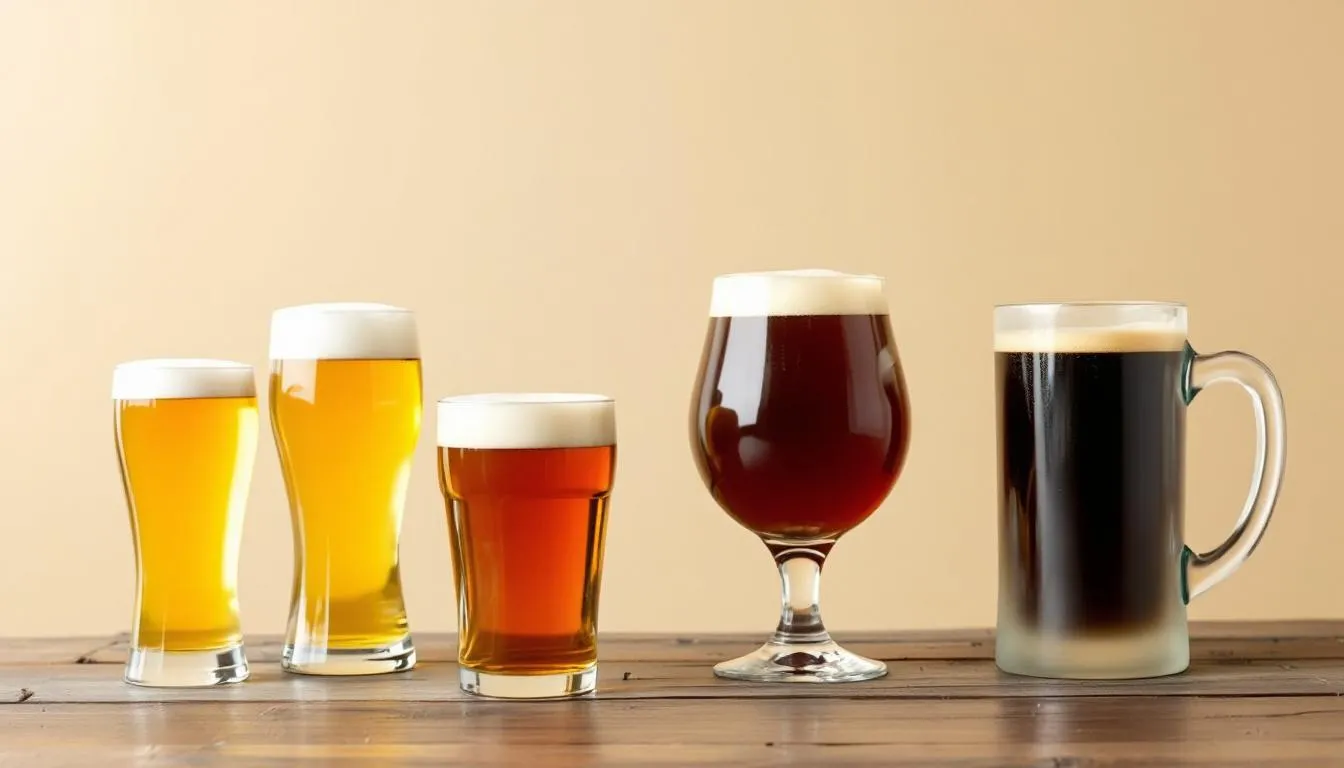
Core Ingredients
The foundation of all beer lies in four essential ingredients:
Water makes up roughly 90% of beer and significantly impacts final flavor. Brewers often adjust water chemistry to match specific regional styles – the soft water of Czech Republic produces exceptional pale lagers like Pilsner Urquell, while the hard water of Burton-on-Trent, England, creates ideal conditions for hoppy pale ale.
Malted grains provide fermentable sugars and much of beer’s flavor and color. While malted barley dominates most recipes, brewers also use wheat, oats, rice, and corn. The malting process involves controlled germination that activates enzymes to convert starches into sugars. Pale malts create light-colored beers, while roasted barley produces the dark, coffee-like flavors found in stout and porter. After brewing, some companies use spent grains to create snacks like ReGrained bars, which are high in protein and fiber.
Hops (Humulus lupulus) provide bitterness, flavor complexity, and natural preservation properties. These green, cone-shaped flowers balance the sweetness of malt while contributing floral, citrus, pine, or earthy flavors depending on variety. The brewing process determines hop character – early additions create bitterness, while late additions preserve delicate aroma compounds.
Yeast performs the magical transformation of sugars into alcohol and carbon dioxide. Different yeast strains produce distinct flavor profiles and determine whether beer becomes an ale or lager. Some specialty styles incorporate wild yeasts or bacteria for unique sour flavors, as seen in traditional lambic beer from Belgium.
Fermentation Process
Fermentation converts sugars into alcohol and carbon dioxide through yeast metabolism. This biological process typically requires 5-14 days for primary fermentation, though some styles benefit from extended conditioning periods lasting months. Temperature control during fermentation significantly impacts final flavor – ales ferment at warmer temperatures (60-75°F) promoting fruity esters, while lagers require cooler conditions (45-55°F) for clean, crisp profiles.
History and Origins of Beer
Archaeological evidence shows beer production dating back to ancient Mesopotamia around 5,000 BCE, making it one of humanity’s oldest prepared beverages. The discovery likely occurred accidentally when wild yeasts fermented stored grain that had become wet, creating a mildly alcoholic mixture that ancient peoples found both nourishing and pleasurable.

Ancient Civilizations
Ancient Egyptians elevated beer brewing to an art form, incorporating the beverage into daily life and religious ceremonies. Egyptian workers received beer rations as part of their wages, and the drink held such importance that it accompanied pharaohs into the afterlife. Archaeological excavations have revealed sophisticated brewing facilities with large-scale grain storage and fermentation vessels.
Greeks and Romans initially preferred wine but gradually adopted beer, particularly in northern regions where grapes struggled to ripen. Roman soldiers often consumed a beer-like beverage called “cerevisia” during campaigns in Britain and Germanic territories, where local populations had already developed advanced brewing techniques.
Medieval European Development
Medieval European monasteries became centers of brewing innovation, developing many techniques still used today. Monks possessed the literacy, resources, and dedication necessary for maintaining detailed brewing records and experimenting with new methods. Their controlled environments allowed for better hygiene and consistency than typical household brewing.
The German Beer Purity Law (Reinheitsgebot) established in 1516 standardized ingredients to water, hops, and malt (yeast wasn’t understood yet), creating quality standards that protected consumers and legitimate brewers. This law influenced brewing practices throughout Europe and continues to guide traditional German beer production.
Industrial Revolution Transformation
The Industrial Revolution transformed beer from a cottage industry to mass production during the 18th and 19th centuries. Steam power enabled larger-scale brewing, while improved transportation allowed breweries to distribute products beyond local markets. Refrigeration technology revolutionized lager production by providing precise temperature control throughout the brewing process.
Scientific advances, particularly Louis Pasteur’s work on fermentation and Emil Christian Hansen’s isolation of pure yeast strains, gave brewers better control over consistency and quality. These developments reduced contamination risks and allowed for more predictable flavor profiles.
Types of Beer
Beer classification traditionally divides into two primary categories based on yeast type and fermentation temperature: ales and lagers. Each category encompasses numerous styles with distinct characteristics, flavors, and brewing traditions.
Ales
Ales are top-fermented beers using Saccharomyces cerevisiae yeast at warmer temperatures (60-75°F). This fermentation style produces more complex flavors and aromatic compounds, resulting in fuller-bodied beers with shorter shelf life compared to lagers.
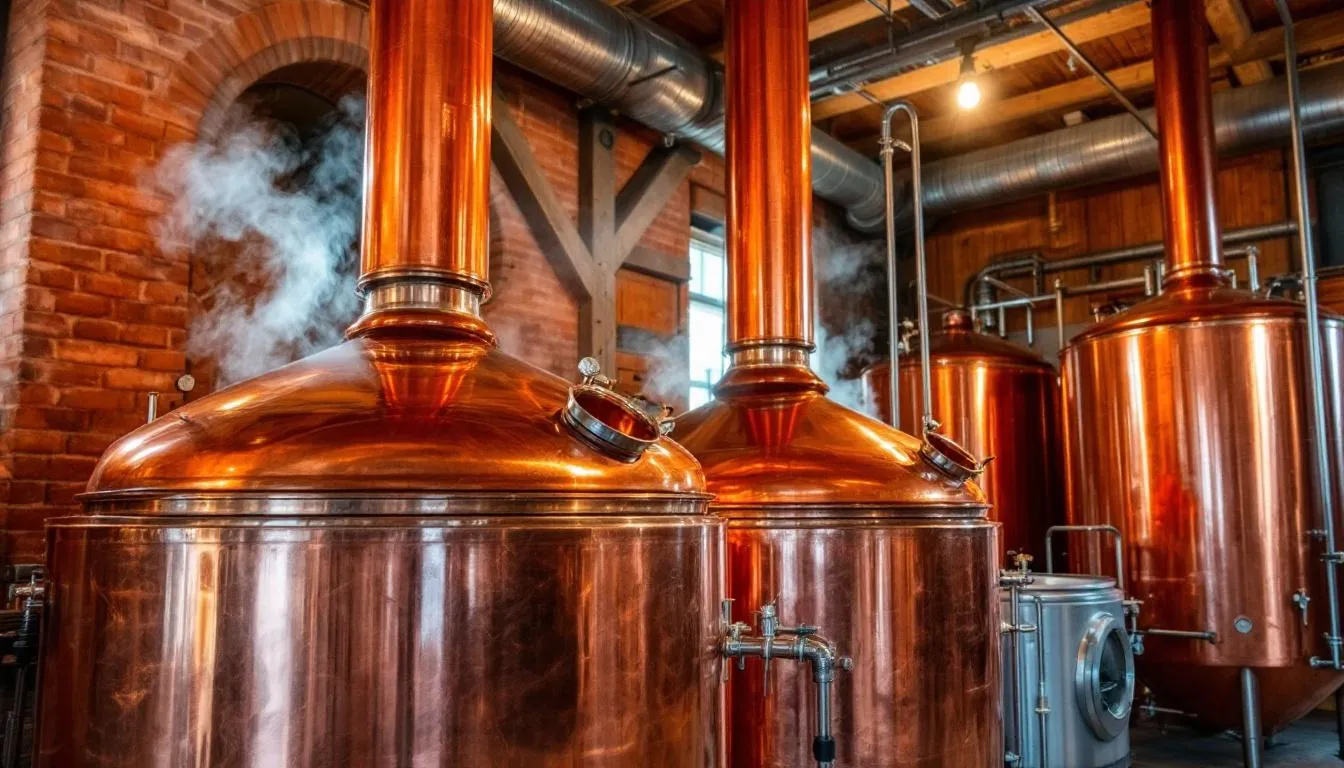
India Pale Ale (IPA)
India Pale Ale represents one of beer’s most popular and hoppy styles. Originally brewed in England for British troops stationed in India, IPA required extra hops and higher alcohol content to survive the long sea voyage without spoiling. Modern IPAs showcase intense hop flavors ranging from citrusy and floral to piney and resinous, with bitterness levels often exceeding 60 IBU (International Bitterness Units).
Stout and Porter
Stout and porter showcase the darker side of brewing, featuring rich, roasted malt flavors reminiscent of coffee and chocolate. Guinness, Ireland’s most famous export, exemplifies the dry stout style with its creamy texture and signature nitrogen carbonation. Porter originated in 18th-century London as a working-class drink, while stout evolved as a stronger variant of porter.
These dark beers derive their color and flavor from roasted barley and specialty malts heated to high temperatures during the malting process. The roasting creates complex compounds that contribute coffee, chocolate, and sometimes smoky characteristics without adding actual coffee or chocolate.
Wheat Beer
Wheat beer incorporates significant proportions of wheat alongside traditional barley malt, creating smooth, often cloudy beers with distinctive flavors. German Hefeweizen features banana and clove notes from specific yeast strains, while Belgian Witbier adds coriander and orange peel for refreshing citrus character.
Lagers
Lagers are bottom-fermented beers using Saccharomyces pastorianus yeast at cooler temperatures (45-55°F). This process, called lagering, requires extended cold storage periods that create clean, crisp tastes with longer shelf life than ales.
Pilsner
Pilsner originated in the Czech city of Pilsen (now Plzeň) in 1842, creating the template for modern pale lager. Czech Pilsner showcases Saaz hops’ delicate, spicy character balanced by sweet Moravian malt. This style influenced countless imitations worldwide, though few match the original’s complexity and balance.
American Light Lagers
American light lagers represent mass-produced beers like Budweiser, Coors, and Miller, designed for broad appeal and consistent flavor. These beers often incorporate adjunct grains like rice or corn to lighten body and reduce costs while maintaining smooth drinkability. Despite craft beer’s popularity, light lagers remain the world’s most consumed beer style.
German Märzen/Oktoberfest
German Märzen and Oktoberfest beers showcase amber-colored, malty seasonal styles traditionally brewed in March (März) and lagered through summer for autumn consumption. These beers emphasize rich, toasted malt flavors with moderate hop character, creating satisfying, food-friendly profiles perfect for traditional German celebrations.
The Brewing Process
Modern beer production follows a systematic brewing process that transforms raw ingredients into finished beer through careful timing, temperature control, and quality management. Understanding these steps reveals the science and artistry behind making beer.
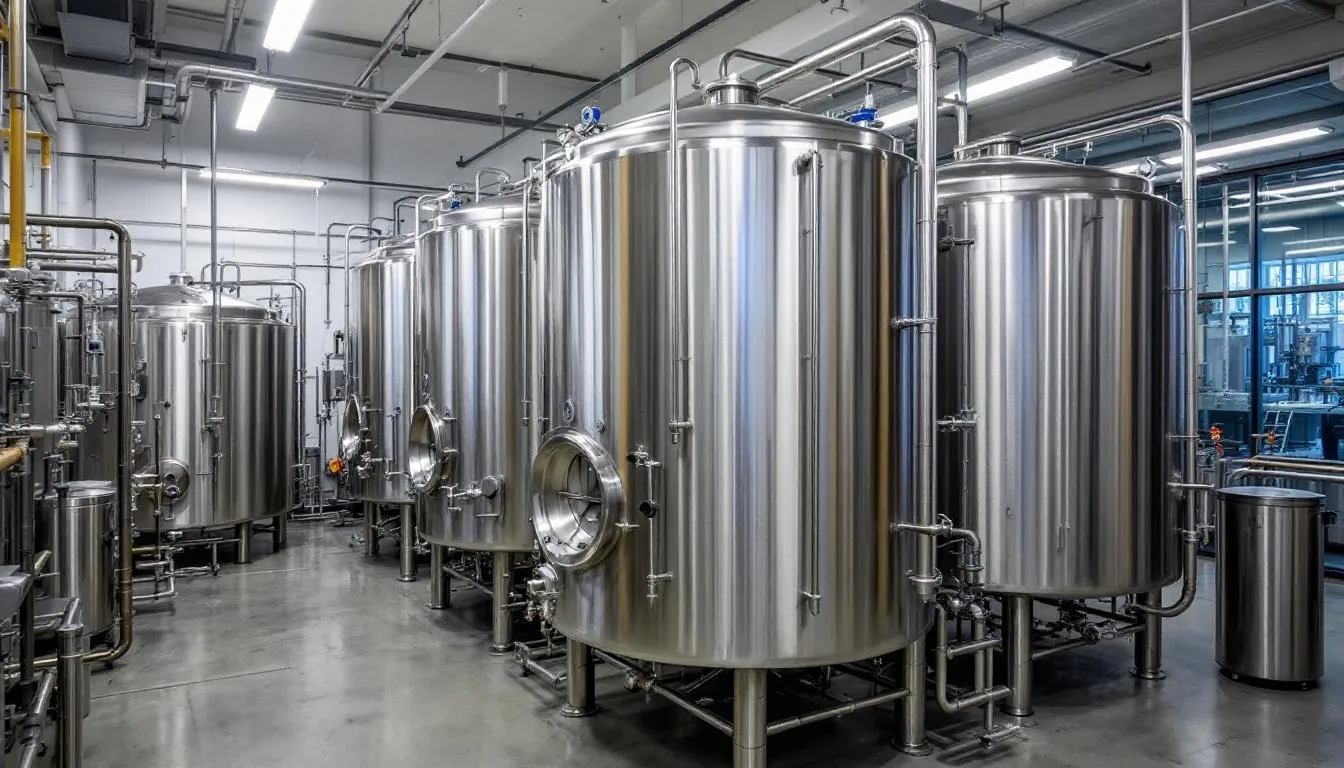
Mashing and Wort Production
The brewing process starts with mashing, during which malted barley is ground and mixed with hot water (148-158°F) to release fermentable sugars. This mixture, called mash, activates enzymes within the malt that convert starches into simple sugars, creating sweet liquid called wort.
Temperature control during mashing significantly impacts final beer character. Lower temperatures (148-152°F) favor beta-amylase enzymes that produce highly fermentable sugars, resulting in drier beers with higher alcohol content. Higher temperatures (154-158°F) promote alpha-amylase activity, creating more complex, unfermentable sugars that contribute body and sweetness.
The mashing process typically requires 60-90 minutes depending on beer style and desired characteristics. Professional breweries often employ multiple temperature steps, gradually raising mash temperature to optimize different enzymatic reactions. This precise temperature control allows brewers better control over final beer attributes.
Following mashing, the lautering process separates liquid wort from grain husks through filtration. Sparging involves rinsing spent grains with hot water to extract remaining sugars, maximizing efficiency while avoiding harsh tannin extraction that could create astringent flavors.
Boiling and Hop Addition
Wort is then boiled for 60-120 minutes to sterilize the liquid and concentrate flavors. This vigorous boiling serves several critical functions: destroying harmful microorganisms, stopping enzymatic activity, precipitating proteins that could cause haze, and extracting hop compounds.
Hops are added at different times during the boil to achieve various effects. Bittering hops added early in the boil contribute isomerized alpha acids that provide beer’s characteristic bitter balance. Flavor hops added mid-boil contribute more delicate hop character, while aroma hops added late in the boil or during cooling preserve volatile essential oils responsible for hop fragrance.
The boiling process also creates color development through Maillard reactions between amino acids and sugars. Longer boil times and higher temperatures produce darker colors and more intense flavors, while shorter boils maintain lighter colors and more delicate profiles.
Fermentation and Conditioning
Following boiling, wort is rapidly cooled to appropriate fermentation temperatures before yeast addition. This cooling step, called “chilling,” must happen quickly to prevent contamination and preserve hop aroma compounds. Modern breweries use plate heat exchangers or other efficient cooling systems to achieve target temperatures within minutes.
Primary fermentation lasts 5-14 days depending on beer style and yeast strain. During this period, yeast consumes fermentable sugars and produces alcohol, carbon dioxide, and numerous flavor compounds including esters, phenols, and higher alcohols. Temperature control remains critical – variations can produce off-flavors or incomplete fermentation.
Secondary conditioning may occur for several weeks to months, allowing flavors to mature and harmonize. Lagers require extended cold conditioning periods (lagering) that create their characteristic clean, crisp profiles. Some ales benefit from warm conditioning that promotes complex ester development.
Modern brewers monitor fermentation progress through gravity measurements, tracking sugar consumption and alcohol production. Advanced breweries employ online monitoring systems that continuously measure temperature, pressure, and specific gravity throughout fermentation.
Final steps include filtration to remove yeast and particulates, carbonation through natural fermentation or forced CO₂ injection, and packaging into bottles, cans, or kegs. Quality control testing ensures proper alcohol content, carbonation levels, and microbiological safety before distribution.
Modern Beer Production
Contemporary beer production combines traditional brewing principles with advanced technology, automation, and scientific quality control. Modern breweries range from small microbreweries producing several hundred barrels annually to massive industrial facilities generating millions of barrels yearly.
Automated Brewing Systems
Today’s breweries employ automated brewing systems with computer-controlled temperatures, timing, and ingredient additions. These systems ensure consistent results while reducing labor costs and human error. Programmable logic controllers (PLCs) monitor and adjust brewing parameters in real-time, maintaining optimal conditions throughout the brewing process.
Stainless steel equipment has become industry standard, ensuring sanitary conditions and consistent quality while eliminating flavors that could leach from other materials. Modern fermentation vessels feature precise temperature control, automatic yeast harvesting systems, and in-line monitoring capabilities.
Quality Control and Laboratory Testing
Quality control laboratories test alcohol content, pH, color, bitterness, and microbiological safety throughout production. Advanced analytical equipment can detect trace compounds, off-flavors, and potential contaminants before they affect finished beer quality. Many breweries maintain sterile laboratory environments rivaling pharmaceutical facilities.
Sensory evaluation remains crucial despite technological advances. Trained taste panels evaluate aroma, flavor, mouthfeel, and overall quality, ensuring beer meets style guidelines and consumer expectations. These human evaluations complement analytical testing, detecting subtle variations that instruments might miss.
Modern breweries often implement Hazard Analysis and Critical Control Points (HACCP) systems borrowed from food safety protocols. These systematic approaches identify potential contamination sources and establish monitoring procedures to prevent quality problems.
Packaging and Distribution
Packaging options include bottles, cans, kegs, and specialized containers designed for specific markets. Cans have gained popularity due to superior protection from light and oxygen, lightweight shipping characteristics, and environmental recyclability. Modern canning lines can package thousands of cans per hour with precise fill levels and minimal oxygen pickup.
Glass bottles remain popular for premium products, offering traditional presentation and the ability to age certain beer styles. However, bottles require careful handling to prevent light damage and breakage during shipping and storage.
Global distribution networks deliver beer to over 180 countries worldwide, requiring specialized logistics to maintain quality during transport. Temperature-controlled shipping, proper storage protocols, and careful handling preserve beer quality from brewery to consumer. Some breweries operate multiple production facilities globally to reduce shipping distances and ensure freshness.
The rise of e-commerce has created new distribution challenges and opportunities, with many breweries now shipping directly to customers through online platforms. However, complex regulations governing alcohol sales across state and national borders require careful navigation of legal requirements.
Regional Beer Styles and Traditions
Beer culture varies dramatically across regions, reflecting local ingredients, climate conditions, historical influences, and cultural preferences. These regional differences have created distinct brewing traditions that continue to influence modern beer production worldwide.
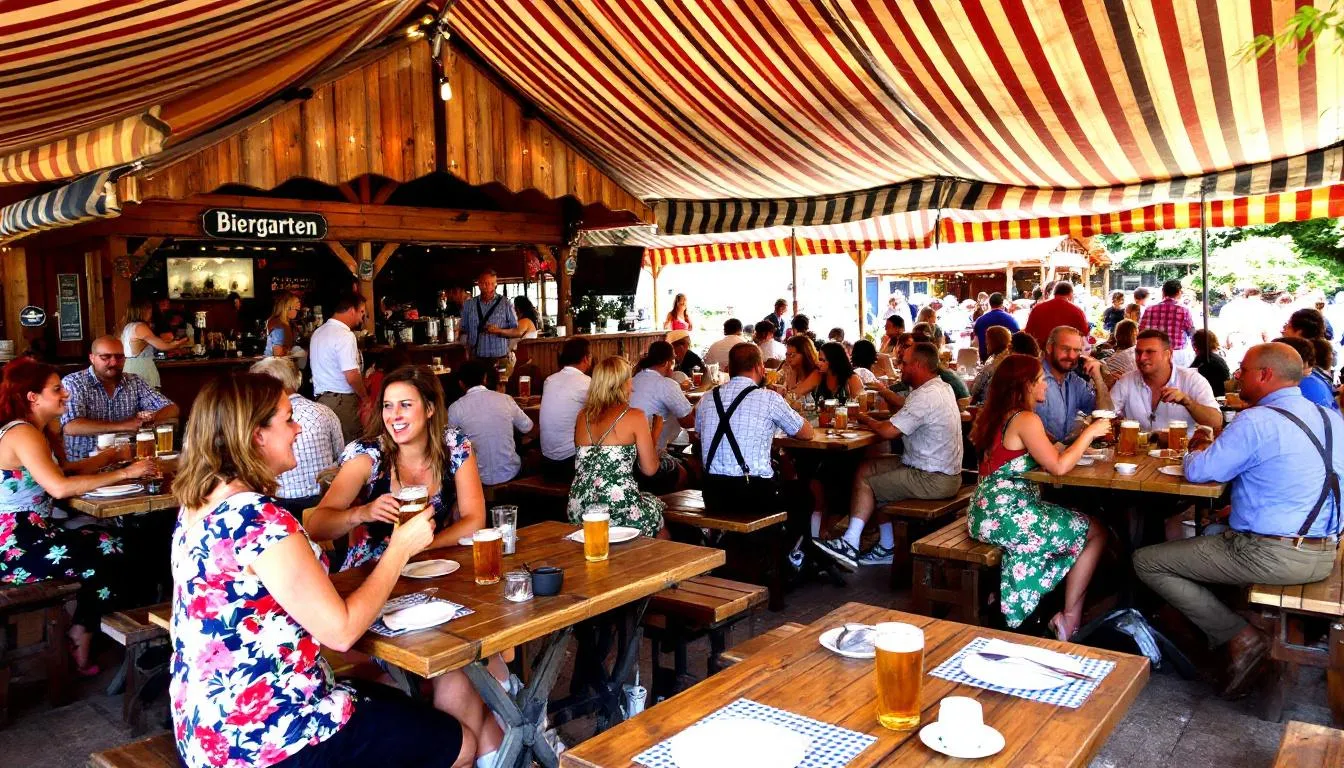
European Beer Traditions
Europe remains the heartland of traditional brewing, with numerous countries maintaining centuries-old beer cultures that continue to influence global brewing practices.
Belgian Brewing Heritage
Belgium produces some of the world’s most complex and distinctive beers, including traditional lambic beer fermented with wild yeasts native to the Senne Valley region. Belgian Trappist ales, brewed by monks in six certified monasteries, represent brewing’s spiritual dimension, combining religious tradition with exceptional craftsmanship.
Belgian brewers pioneered numerous innovative techniques, including bottle conditioning, mixed fermentation, and fruit additions. These methods create beer styles unavailable elsewhere, characterized by complex flavors, higher alcohol content, and wine-like qualities that have influenced craft brewers worldwide.
German Beer Gardens and Oktoberfest
Germany’s beer culture centers around traditional beer gardens and the famous Oktoberfest celebration, which has been celebrating lager traditions since 1810. German brewing emphasizes purity, consistency, and regional specialty styles that reflect local ingredients and preferences.
The Reinheitsgebot (beer purity law) continues to influence German brewing, though modern interpretations allow for greater ingredient flexibility while maintaining quality standards. German brewers excel at lager production, creating subtle, balanced beers that showcase malt and hop character without overwhelming complexity.
British Pub Culture
British pub culture features cask-conditioned ales and bitter styles served at cellar temperature through traditional hand pumps. This serving method, called “real ale,” preserves delicate flavors and creates smooth, creamy textures impossible to achieve through forced carbonation.
Britain developed numerous influential beer styles including IPA, porter, stout, and mild ale, many of which originated to serve specific social classes or working conditions. British brewing traditions emphasize malt character, moderate hop bitterness, and sessionable alcohol levels suitable for extended social drinking.
Czech Pilsner Heritage
The Czech Republic claims heritage as birthplace of pilsner, with Saaz hop varieties creating the distinctive spicy, floral character that defines authentic Czech lagers. Czech brewing techniques emphasize soft water, floor-malted barley, and extended lagering periods that create exceptionally smooth, balanced beers.
Traditional Czech serving practices include multiple pours that create dense, creamy foam heads and precise temperature control that preserves delicate flavors. Many Czech breweries still employ open fermentation vessels and traditional brewing methods that maintain connections to historical practices.
Global Beer Innovation
Modern brewing has expanded far beyond European traditions, with numerous countries developing unique beer styles that reflect local ingredients, climate conditions, and cultural preferences.
American Craft Brewing Movement
The American craft brewing movement began in the 1960s and has exploded to over 8,000 breweries as of 2023, creating unprecedented diversity in beer styles and flavors. American brewers pioneered extreme beer styles featuring intense hop character, unusual ingredients, and innovative brewing techniques.
American craft brewers often ignore traditional style guidelines, creating hybrid styles that combine elements from different brewing traditions. This experimental approach has produced numerous award-winning beers and influenced brewing practices worldwide.
The movement emphasizes local sourcing, community connection, and artisanal production methods that contrast sharply with mass-market brewing. Many craft breweries operate taprooms, restaurants, and event spaces that create direct relationships between brewers and customers.
Japanese Brewing Innovation
Japanese brewing combines traditional sake production techniques with beer production, creating unique hybrid beverages and innovative production methods. Japanese brewers excel at precision, consistency, and subtle flavor development that reflects broader cultural values.
Many Japanese breweries experiment with rice additions, traditional Japanese fruits, and aging techniques borrowed from sake production. These innovations create distinctly Japanese beer styles that have gained international recognition for quality and creativity.
Mexican Beer Exports
Mexican beer exports feature light lagers like Corona and Dos Equis that have achieved global popularity through effective marketing and consistent quality. Mexican brewing often incorporates lime, salt, and other traditional accompaniments that enhance refreshment qualities in hot climates.
The success of Mexican beer brands demonstrates how local preferences can achieve international appeal when properly positioned and marketed. These beers emphasize drinkability, refreshment, and social consumption rather than complex flavors or traditional brewing methods.
Emerging Markets and Innovation
Emerging markets in Africa and Asia are developing unique local beer styles that incorporate indigenous ingredients and traditional fermentation methods. These innovations often combine modern brewing technology with ancient ingredient knowledge, creating entirely new categories of fermented beverages.
Many emerging market breweries face infrastructure challenges including unreliable electricity, limited water quality, and complex distribution networks. However, these constraints often spur innovation, leading to creative solutions that influence brewing practices globally.
The global craft beer movement continues expanding into new markets, with international collaboration creating cross-cultural beer styles that blend brewing traditions from multiple countries. This globalization of brewing knowledge accelerates innovation while preserving traditional methods and regional characteristics.
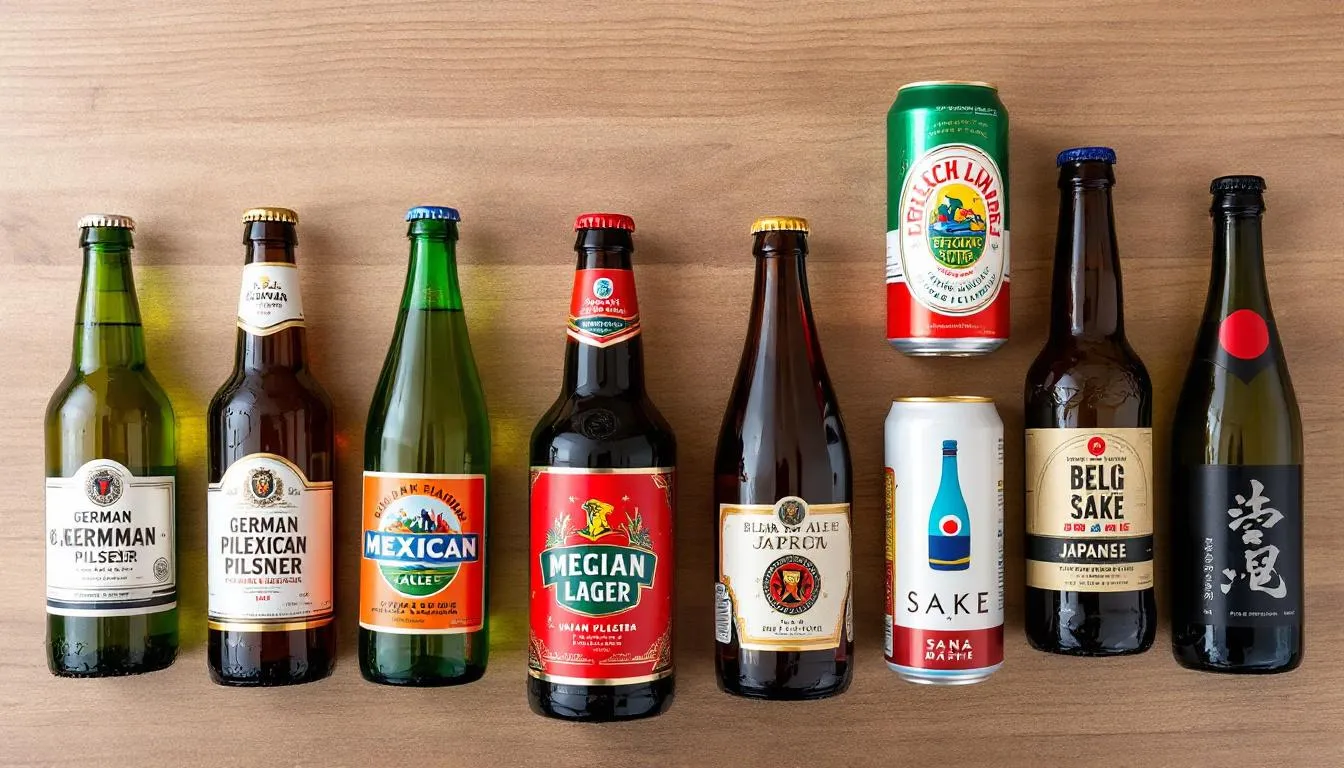
Modern brewers increasingly recognize that beer quality depends not just on technical precision but also on understanding cultural context, local preferences, and social consumption patterns. The most successful breweries balance innovation with respect for traditional methods, creating products that satisfy both adventurous beer enthusiasts and traditional consumers seeking familiar comfort.
The future of beer production appears increasingly diverse, with continued growth in craft brewing, specialty styles, and innovative ingredients. However, traditional styles and time-tested brewing methods remain popular, suggesting that beer’s future lies in expanding choice rather than replacing established traditions.
As the industry continues evolving, brewers must navigate challenges including environmental sustainability, changing consumer preferences, and complex regulatory environments while maintaining the quality and character that make beer such an enduring and beloved beverage. The word “security” takes on new meaning in this context, as breweries implement sophisticated security solutions to protect both their physical facilities and their valuable intellectual property from various threats.
Modern brewery operations often face online attacks targeting their computer systems, requiring robust security measures to protect sensitive data and maintain operational continuity. Many breweries have found their websites blocked or experienced issues where the cloudflare ray id found errors interfere with customer access to their online shops. When customers encounter messages like “cloudflare ray id” or “cloudflare ray i” errors, it can prevent them from completing purchases or accessing information about beer products.
These security challenges require breweries to work closely with their site owners and implement comprehensive security services that can detect and prevent various types of attacks. Sometimes a certain word or phrase in customer queries can trigger security protocols, or malformed data and sql command attempts may be performed triggered by malicious actors trying to compromise brewery systems. In such cases, customers might find themselves unable to access brewery websites or complete transactions, requiring several actions to resolve the issues and restore better control over their online presence.
The importance of protecting brewery operations extends beyond just physical security – it encompasses protecting customer data, maintaining website functionality, and ensuring that beer enthusiasts can easily access information about their favorite products whether they’re shopping for bottles and cans at a local store, visiting pubs and bars, or exploring offerings from various breweries around the world. From the hop fields of England to the microbreweries of America, from the ancient brewing regions of Belgium to the emerging markets where people are just beginning to discover the complex flavors that can be produced from simple ingredients like grain, barley, yeast, and water, beer continues to bring people together while creating economic value for producers and joy for those who consume these carefully crafted beverages.
Whether served over ice on a hot day, paired with fruits and other foods, or enjoyed in its pure form from a perfectly chilled glass, beer remains a testament to human ingenuity and our ability to transform basic agricultural products into something that transcends mere sustenance to become a source of pleasure, tradition, and cultural identity that connects us across time and geography.
The brewing industry’s continued growth demonstrates beer’s enduring appeal while highlighting the importance of maintaining both quality and accessibility in an increasingly complex global marketplace where customers expect convenience, security, and choice in how they discover, purchase, and enjoy their favorite beers.

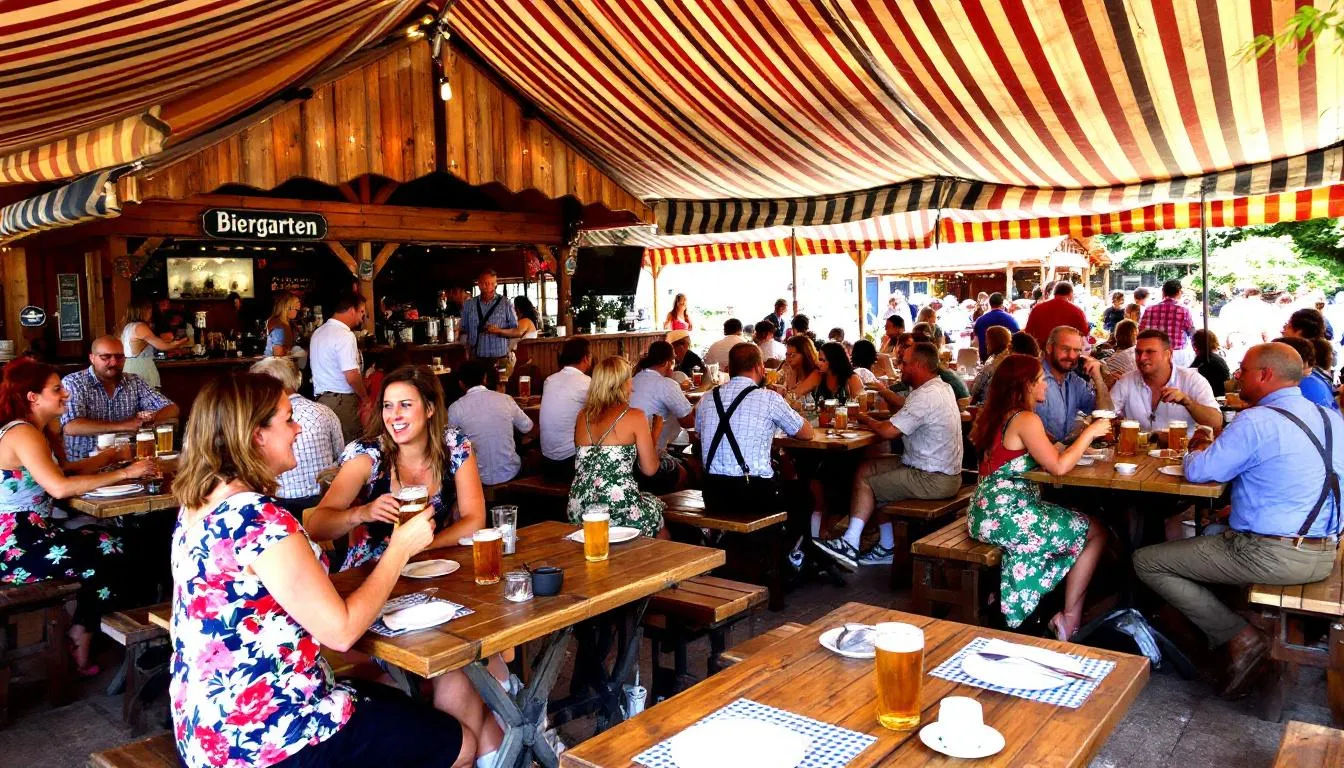
Leave a Reply